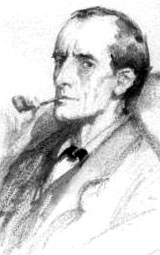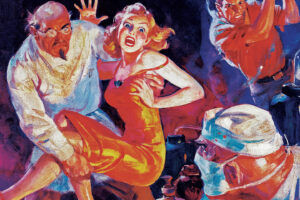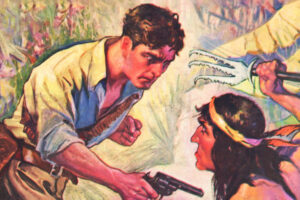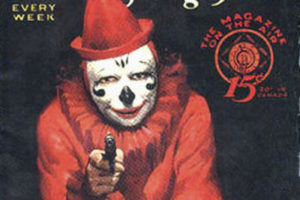 I think that for most people they are probably aware of Sherlock Holmes. If they haven’t read one or more of Arthur Conan Doyle‘s original stories, they have most likely seen a Holmes movie or TV show. Even recently when we’ve had two new movies with Robert Downey Jr. as Holmes, but also TV shows with modern takes in the U.K. (“Sherlock Holmes”) and the U.S. (“Elementary”), it’s hard not to be aware of him.
I think that for most people they are probably aware of Sherlock Holmes. If they haven’t read one or more of Arthur Conan Doyle‘s original stories, they have most likely seen a Holmes movie or TV show. Even recently when we’ve had two new movies with Robert Downey Jr. as Holmes, but also TV shows with modern takes in the U.K. (“Sherlock Holmes”) and the U.S. (“Elementary”), it’s hard not to be aware of him.
Most know of Sherlock Holmes, the world’s first “consulting detective” who roomed with his associate Dr. John Watson, a veteran of the Afghan wars. They lived at 221-B Baker Street, watched over by Mrs. Hudson. He took cases, sometimes helping Scotland Yard, occasionally dealing with his older brother, Mycroft Holmes, who worked for the British government (hinted he probably was the British government). There is also the classic counterpart to Holmes, the villainous Professor Moriarty (though people would be surprised to learn that he didn’t appear much in the Holmes stories). Doyle, tiring of Holmes, bumped off both Holmes and Moriarty at the Rickenback Falls, though later brought Holmes back, after which, he retired to raise bees.
Holmes was created by Arthur Conan Doyle, a doctor with a struggling practice. He basically created the character to make money, like a lot of pulp authors. Doyle would later get into other works, creating the interesting Professor Challenger (a subject of a future posting), and historical fiction. Like other authors, Doyle was most proud of his “serious” works, which are largely unknown today, being overshadowed by Holmes.
I feel that Holmes is pulpish because he first appeared in story magazines that preceded the pulps, before appearing in book form. There were four Holmes novels (“A Study in Scarlet,” “The Sign of the Four,” “The Hound of the Baskervilles,” and “The Valley of Fear”), along with 56 short stories collected in five volumes. Today, it’s easy to find omnibus volumes with all the works.
I was first introduced to Sherlock Holmes in high school when we read one of the short stories in English class. I enjoyed the story, and so picked up a two-volume paperback set of all the works (I think put out by Bantam Books). I read them all. It was much later that I got into other authors’ take on Holmes.
Holmes spawned several pastiches, many of which became characters in their own right. In Europe, you have Harry Dickson, known as the “American Sherlock Holmes.” In the U.K., Sexton Blake started off as a Holmes clone (even living at Baker Street), but became his own character.
August Derleth, wanting to write new Holmes stories (even trying to get permission from Doyle to do so), instead created his own take on Holmes, Solar Pons, who is actually a separate character from Holmes, but set in the Edwardian period.
Other authors have done some interesting works with related characters. One author created a series using Irene Adler. Another used Mycroft Holmes. One author created a series of Holmes stories set in America. A couple have created series using Moriarty. Another has Holmes marrying and with his wife having further adventures after his supposed retirement. These will be subjects of further postings.
Despite all that, I always recommend that people read the original stories to find out the real Sherlock Holmes before tackling the others.




Sorry to be pedantic, but the new BBC series is actually just called “Sherlock”- it’s meant to emphasise how, being set in the modern day, Holmes tends to go by his first name more often than not. Likewise, Watson is more commonly John and even Lestrade is occasionally Greg.
Great article. I’ve always liked how Holmes often seems like a predecessor to both pulp heroes and the later superheroes. Of course, his “superpower” of insanely accurate deductive reasoning is theoretically achievable, which to me is the primary distinction between pulp heroes as compared to superheroes.